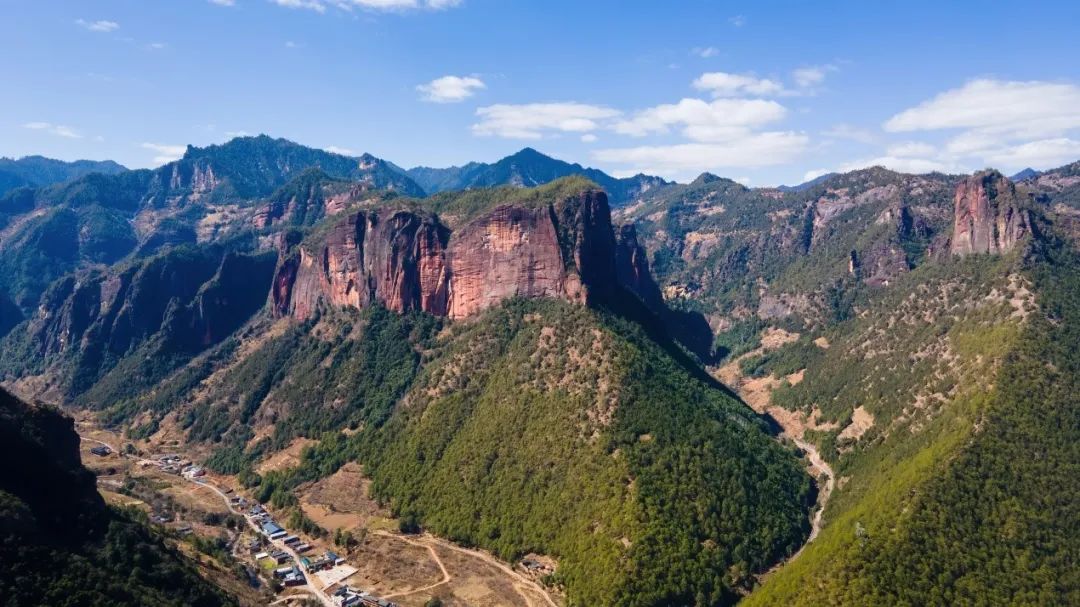Laojun Mountain is the core area of the “Three Parallel Rivers” World Natural Heritage and a sacred place of the thousand-year-old Taoist culture.
If you are tired of the crowded Netflix attractions and long for a trip with deep dialog with nature and close contact with history, then Laojun Mountain is definitely worth adding to your travel list.
Table of Contents
A perfect blend of thousand-year-old Taoist temple and natural wonders
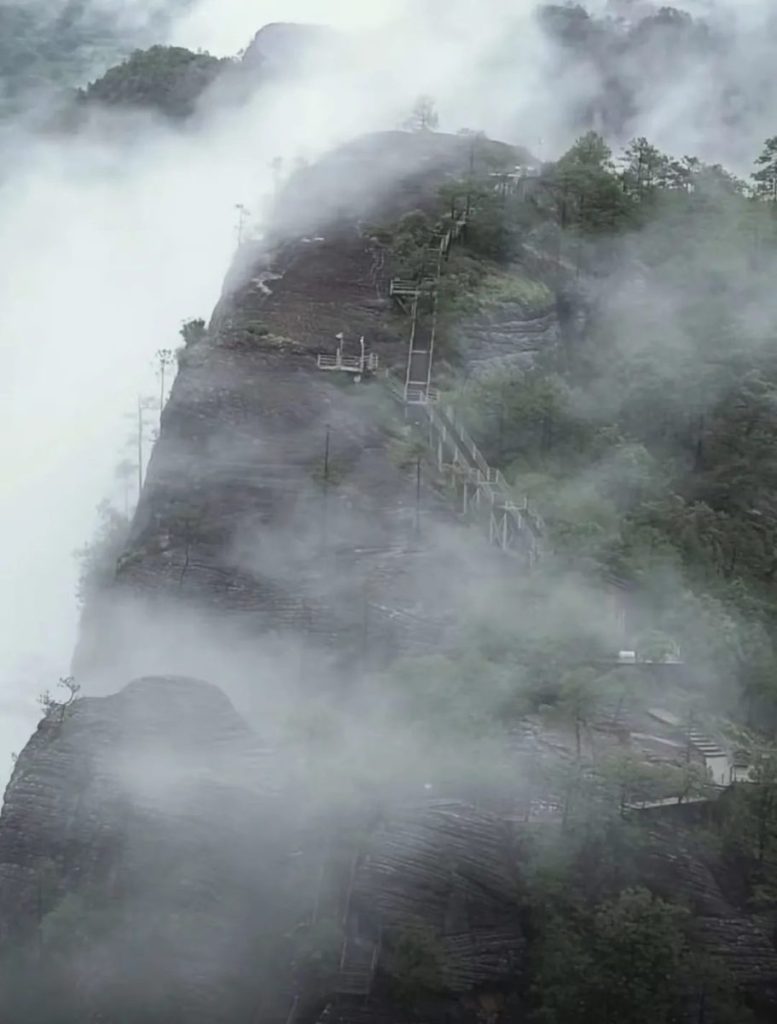
The Legendary Origin of Taoist Holy Land
The name of Laojun Mountain comes from the legend of Tai Shang Lao Jun, the founder of Taoism. According to legend, this immortal once practiced alchemy and Taoism here, and the fire of his furnace remained unquenched for thousands of years, eventually coloring the rocks into crimson, creating the stunning Danxia landscape of today.
Since the Tang Dynasty, this place has been a holy place for Taoist priests to retreat, and the Golden Dome Taoist temple complex on the mountain is still surrounded by incense, with the sound of bells in the early morning and drums in the evening reverberating through the valley, as if the chanting of scriptures from a thousand years ago could be heard.
Three Rivers: The Epic Geological Wonders of the Earth
Standing on the main peak of Laojunshan Mountain, you will be shocked by the scene in front of you: the Jinsha River, Lancang River, Nujiang River, three big rivers like a giant dragon running parallel in the mountains, the nearest place is only a few dozen kilometers away from each other, but never intersect.
This spectacle is called by geologists as “the living fossil of the earth’s evolution for 400 million years”, and Laojun Mountain is the best viewing platform for this natural epic.
In 2003, UNESCO inscribed it on the World Heritage List, praising it as “the epitome of biodiversity in the northern hemisphere”.
Five Secret Scenic Spots: Unlocking the Natural Code of Laojun Mountain
Gold Peak Sea of Clouds: As if stepping into the Heavenly Palace
Best time to experience: Early morning or after the rain clears up
Location: Golden Peak (4515 meters above sea level), the main peak of Laogun Mountain
When the first ray of sunlight breaks through the clouds, there is a sea of clouds under your feet and snowy mountains in the distance, and the Golden Peak Taoist Temple looks like a floating island in the heavenly palace in the morning light. Here hides the highest altitude in China’s Taoist architectural complex, green bricks and gray tiles, Taoism, “the unity of man and heaven” philosophy is visualized in front of the clouds and mountain wind.
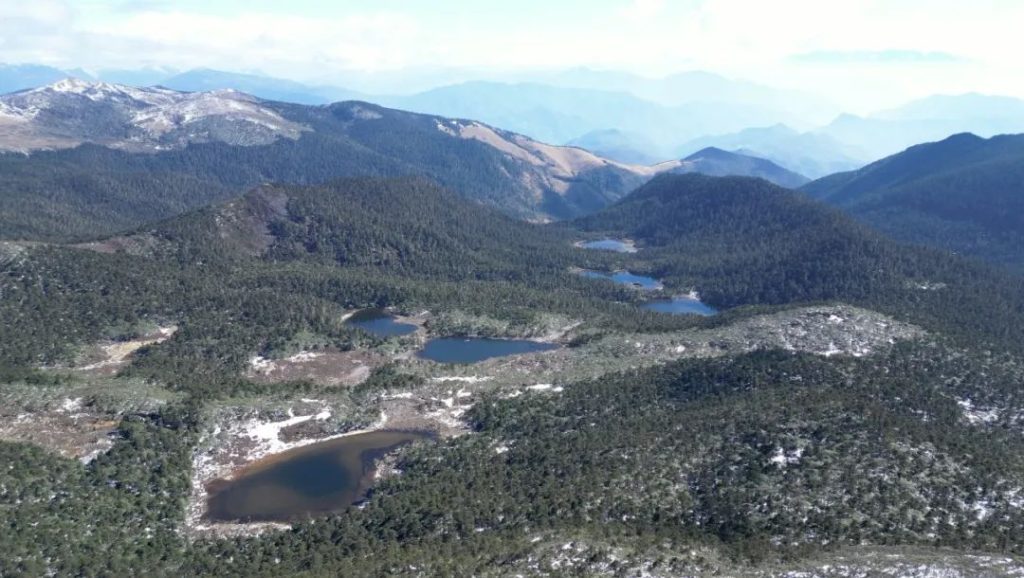
Ninety-nine Dragon Pools: Mysterious Lakes on the Plateau
Geological wonders: dozens of alpine lakes formed by glacial movement, the water changes color with the weather, from clear blue-green to deep dark green, just like the earth’s palette.
Ecological treasure trove: Rare yellow azaleas grow here, with wildflowers like a carpet in summer and colorful forests in fall, making it a paradise for photographers.
Local legend: The Bai people believe that these lakes are the nectar of the Goddess of Mercy, and the herdsmen come to the lakes to pray for rain in times of drought.
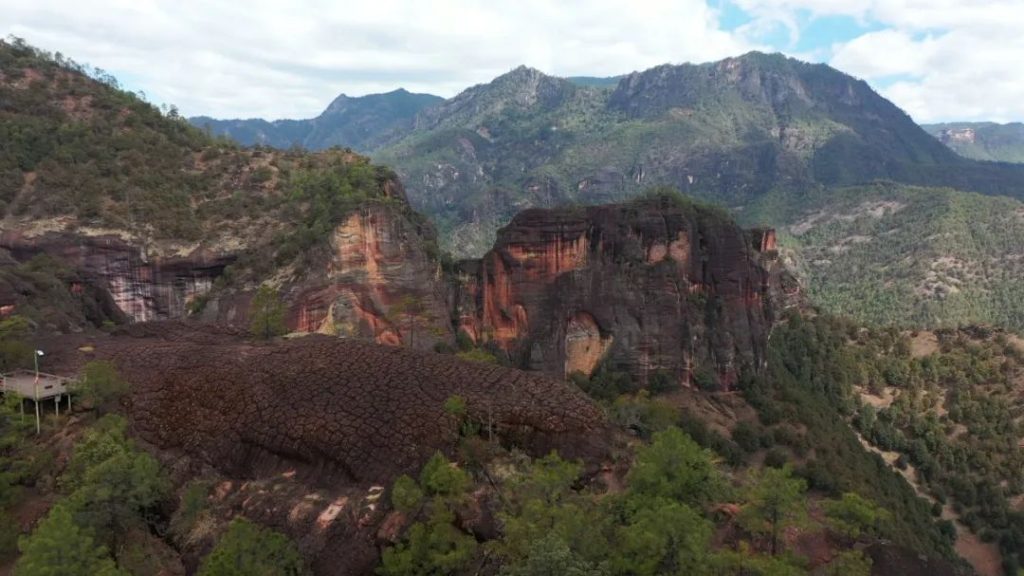
Dawn Danxia: Red Geological Symphony
Shocking Landscape: Thousands of Turtles at Sunrise (tens of thousands of tortoise-like rocks radiate in golden color at sunrise)
Comparison experience: Compared with the Danxia landform in Zhangye, Gansu Province, the red color of Laojun Mountain is more intense, and due to the high altitude, clouds and mist often wrap around the mountainside, forming the magical scene of “Red Rock Floating Island”.
Scientific mystery: iron oxide in the rock by millions of years of weathering, the formation of a unique cracked texture, like the skin of the earth.
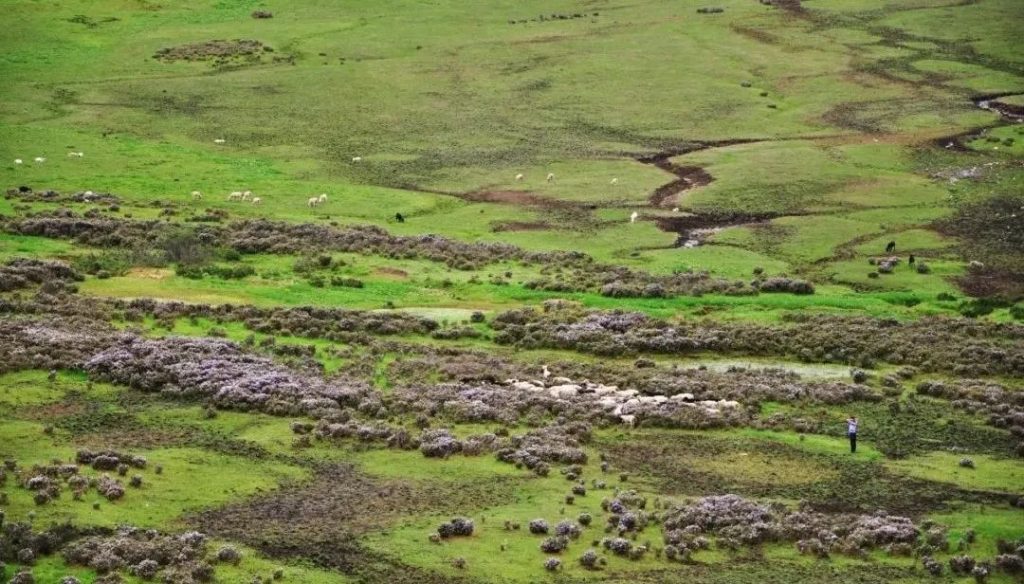
Geladan Grassland: Pastoral Song on the Clouds
Altitude: 3700 meters (much higher than Lijiang Old Town)
Play Recommendation:
Horseback riding through the sea of flowers (June-July azalea blooming period)
Camping and stargazing (the Milky Way is clearly visible at night)
Visiting Lisu Ranch (experience traditional wool weaving)
This “grassland in the sky” is green in summer and turns into a snowfield in winter, making it a rare ecological island in the Hengduan Mountains.
The Ancient Tea Horse Road: A Thousand Years of History in the Sound of Horses’ Hooves
Recommended hiking route: Stone Town to Taiziguan to Liuqing (about 18 kilometers, takes 6 hours)
Cultural highlights:
Well-preserved horseshoe-shaped stone steps
Ancient method of tea roasting in Naxi villages
Legend of the “Ancient Salt Horse Road” told by horse gang leaders
This ancient road was once the lifeline connecting Tibet and the Central Plains, and now each stone slab is engraved with the scent of tea and the imprint of the horse’s hooves.
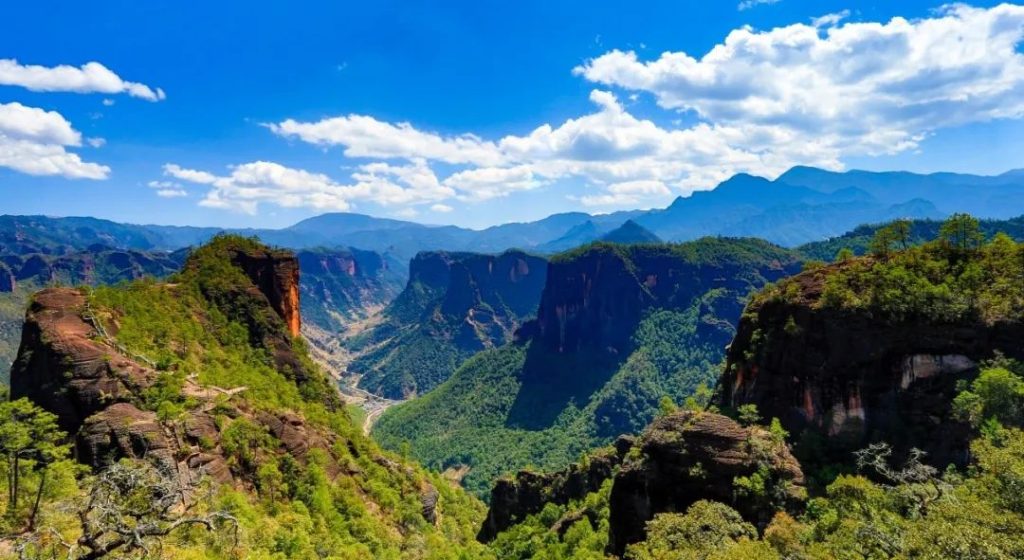
How to travel to Laojun Mountain
Transportation Tips
Self-driving: from Lijiang, via Shigu Town (the first bay of Yangtze River) to Liming Township, the whole journey takes about 3 hours, the road is in good condition but with more curves.
Public Transportation: Lijiang Bus Station has a daily shuttle bus directly to Liming Township, which needs to be booked in advance.
Niche: Horseback riding from Geladan Grassland to the Golden Peak, crossing the primitive forest along the way, need to be accompanied by a guide.
Accommodation Recommendations
Light luxury option: Geladan tented camp, equipped with underfloor heating and stargazing skylights, advance booking required.
On-the-ground experience: Lisu huts in Dawn Village, where you can participate in the torch festival dance and taste local food.
Backpacker stronghold: Laojunshan Youth Hostel, offering hiking gear rental.
Best Season
May-June: Rhododendron sea and alpine meadows returning to green
September-October: colorful forest season and golden period for stargazing.
Required equipment
Non-slip hiking shoes (some sections need to cross the quicksand slope)
Portable oxygen cylinder (altitude above 4000 meters may have plateau reaction)
Waterproof vest (weather in mountainous areas is changeable)
Travel Tips
Ecological protection: Please observe the principle of “no trace of mountains and forests”, and the use of sunscreen containing chemical substances is prohibited in the area of the Ninety-Nine Dragon Pool.
Cultural Respect: Please keep quiet when entering Taoist temples and ask permission before photographing local residents.
Safety warning: Climbing undeveloped rock walls is prohibited in the Danxia geomorphology area.
The beauty of Laojun Mountain is the ray of sunlight penetrating time and space in the sea of clouds at the Golden Peak, the starry sky reflected in the Ninety-nine Dragon Pools, and the sound of hoofbeats on the Tea and Horse Trail that gradually moves away.
There is no commercialized hustle and bustle here, only the wind and rock dialogue, only you and nature alone.
When you lie in the Grattan grassland tent, watching the Milky Way rise from behind the snow-capped mountains, you may understand: Laojunshan gifted travelers, not only a visual feast, but also a baptism of the soul.
